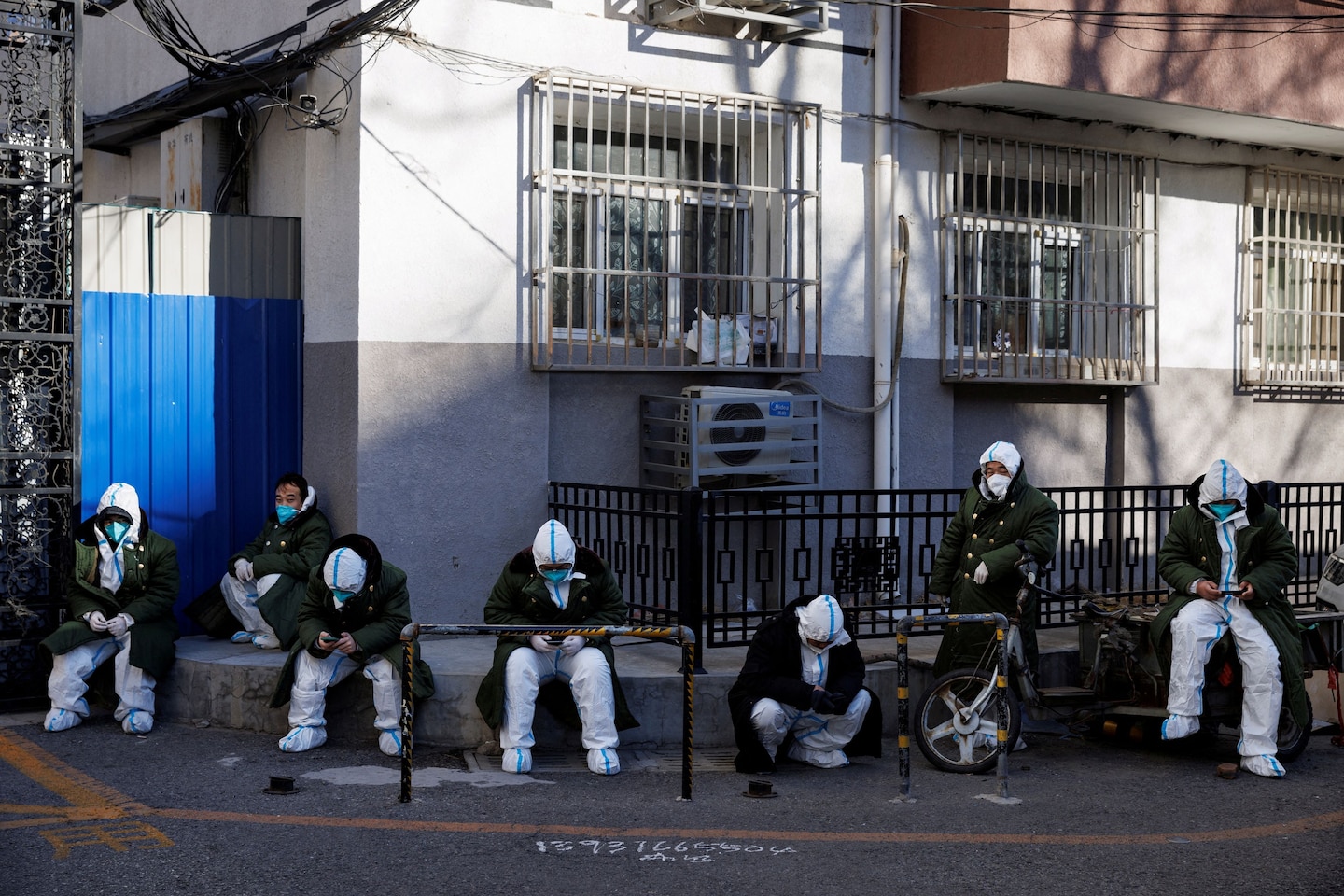Multiple models of the current outbreak, which began before an unexpected easing of coronavirus restrictions in early December, predict a wave of infections could kill more than 1 million, bringing China in line with total deaths from covid in the United States. Of particular concern is the low vaccination rate among older populations, with just 42 percent of over 80-year-olds having received a booster shot.
In recent days, funeral homes in Beijing have been unusually busy, with some staff reporting that covid-related deaths are the cause, according to reports from the Financial Times and Associated Press. A receptionist at a funeral parlor in Beijing’s Shunyi district, who declined to give her name, told The Post all eight cremators are operating around-the-clock, cadaver freezer boxes are full and there is a 5-6 day waiting list.
After authorities last week stopped reporting asymptomatic cases, word of mouth has become the main way many track the outbreak. Social media timelines are a constant stream of positive test results, reversing nearly three years of most people in China having no personal experience with the virus. Hospitals have filled steadily, even as authorities announced measures to increase emergency-care capacity.
The State Council, China’s cabinet, in early December issued updated guidance on the classification and reporting of covid-related deaths. The details of the rules were not made public, but the respected Chinese publication Caixin on Saturday reported that the new procedure requires a ruling made at a hospital and within 24 hours. Deaths considered not directly caused by covid don’t count.
It also raised the threshold for considering an individual to be infected by covid. Patients must be found to have severe hypoxemia or below 93 percent arterial oxygen saturation levels, both of which would suggest the individual was severely starved of oxygen.
The update reflected a “great change” in the nature of deaths from recent variants, said Wang Guiqiang, a government adviser and director of the infectious diseases department at Peking University First Hospital. Wang said the recent variants rarely result in respiratory failure. “The primary causes of death after infection with the omicron strain are underlying diseases or old age,” he told an official news conference on Tuesday.
The procedure is in line with China’s earlier criteria for tallying deaths, which has generally been conservative since the start of the pandemic, said Jin Dongyan, a virologist at the University of Hong Kong.
Jin noted that some individuals who died of underlying conditions worsened by covid were counted during an outbreak in Shanghai earlier this year, in what could have been a change “to emphasize that many people would die from covid” and show why lockdowns were necessary.
“Now they just returned to their old method,” Jin said, adding that the lack of information from the government makes it impossible to know the full death toll.
The deaths of individuals who were infected when they died have added to concerns that the daily number is too low to be credible. A former footballer, who local media said had covid and an underlying condition, died on a day when the official toll was zero. A medical student who collapsed while at work was also cited by commentators as another case missing from the official figures.
Yang Linyi, 24, believes his grandfather, Yang Yongquan, should have been included in the count. The 84-year-old Yang died of a heart attack in the western Chinese city of Chongqing on Sunday after almost all his main caregivers had contracted the disease. That morning, he had been running a high fever and vomiting, leading the family to suspect the virus was partially to blame, Yang said in an interview.
But because he was never tested the case was automatically excluded. “Grandpa was not officially a covid patient, but he did have covid-related complications,” Yang said. “They stopped counting — too many have been infected and too many people died.” A simple funeral was held at a local crematorium on Monday, with many attendees still covid-positive.
China’s procedures for determining whether a case counts as covid-related have been a matter of debate throughout the pandemic. In the early days of the outbreak in Wuhan, accusations of undercounting eventually led authorities to raise the death toll by 1,290 cases. Officials denied a coverup and said the additional deaths had been discovered from thorough checks of funeral and prison records.
Aside from the toll on families, a spike in avoidable deaths would be an embarrassment for the Chinese Communist Party, which has justified harsh coronavirus lockdowns by citing the great value the leadership places on saving every life it can. Officials rebuffed criticism of the strict approach by underscoring how many people died of the virus in more developed economies in Europe and North America.
In November, the government still appeared set on using strict containment measures, despite the more transmissible omicron making the measures increasingly ineffective. Anger at the seemingly arbitrary interventions into daily life built until protests broke out late that month, spreading across the country to more than a dozen cities.
But few expected the authorities to move so quickly in the other direction. Many families, fearing that hospitals and local authorities are unprepared, have reacted to the sudden easing of coronavirus restrictions by staying home and stockpiling medicine.
To combat unease, China’s propaganda messaging took a U-turn. Warnings about the dangers of infection were replaced by assurances that infection is no big deal. On Tuesday, the People’s Daily newspaper, the Chinese Communist Party mouthpiece, ran an article with the headline: “I tested positive. I got better.”
Pei-Lin Wu in Taipei contributed to this report.



